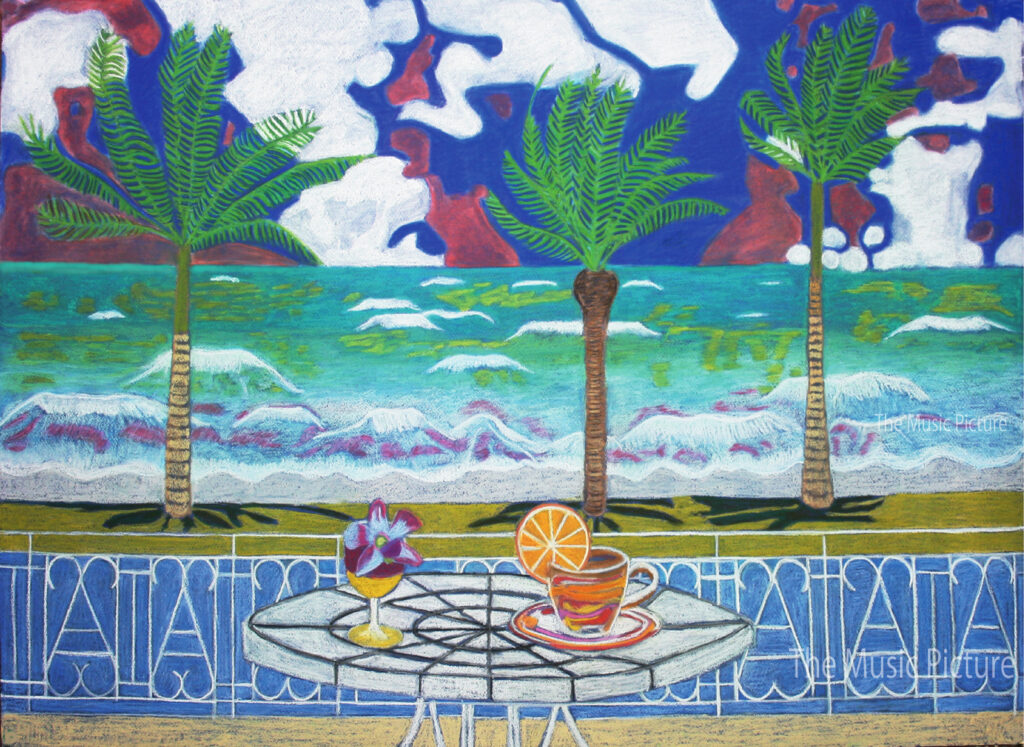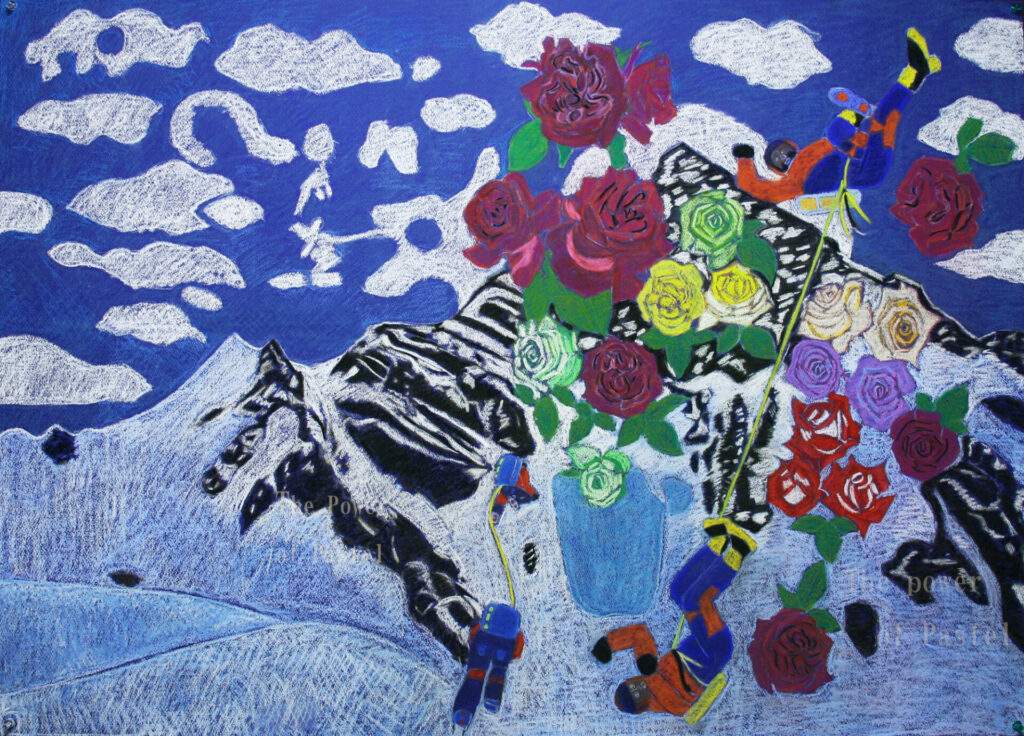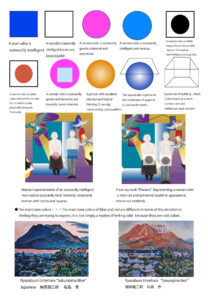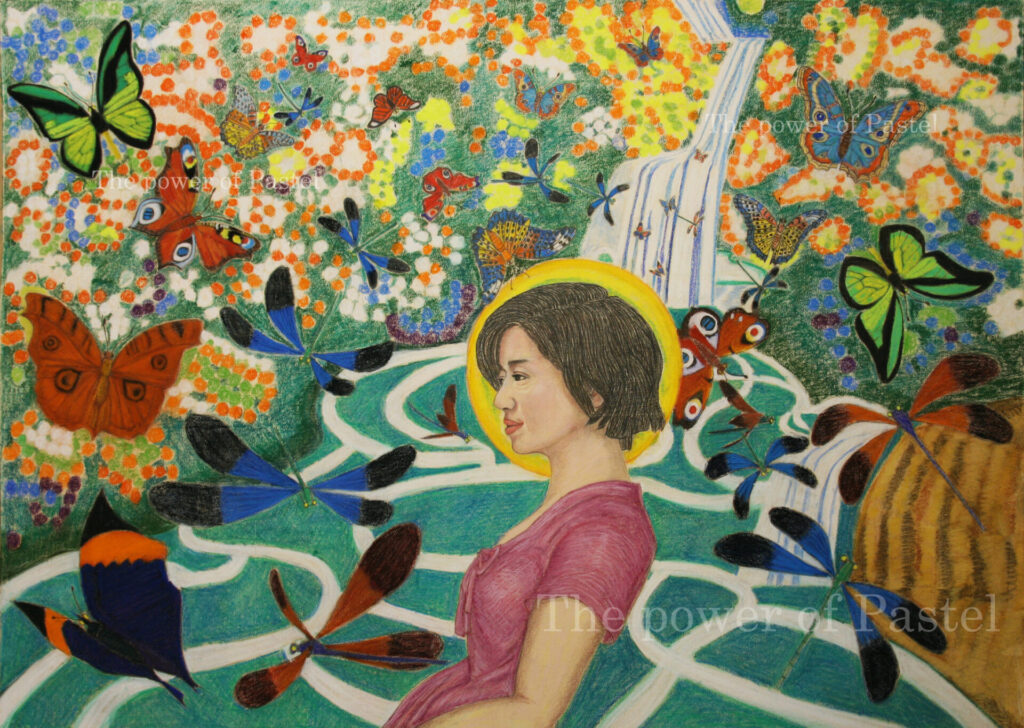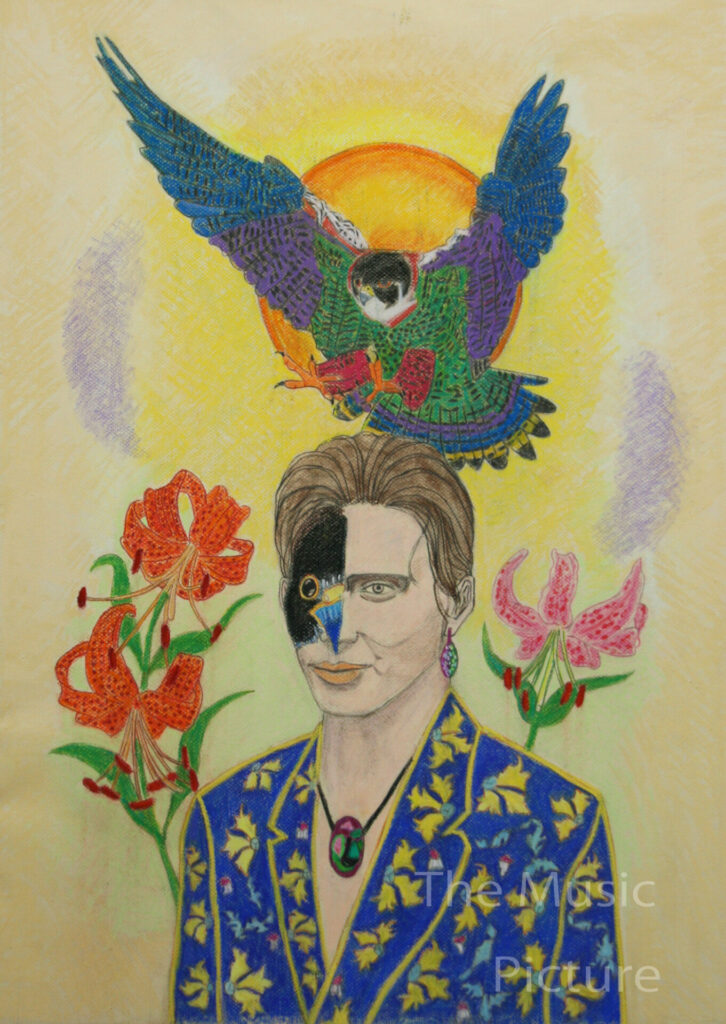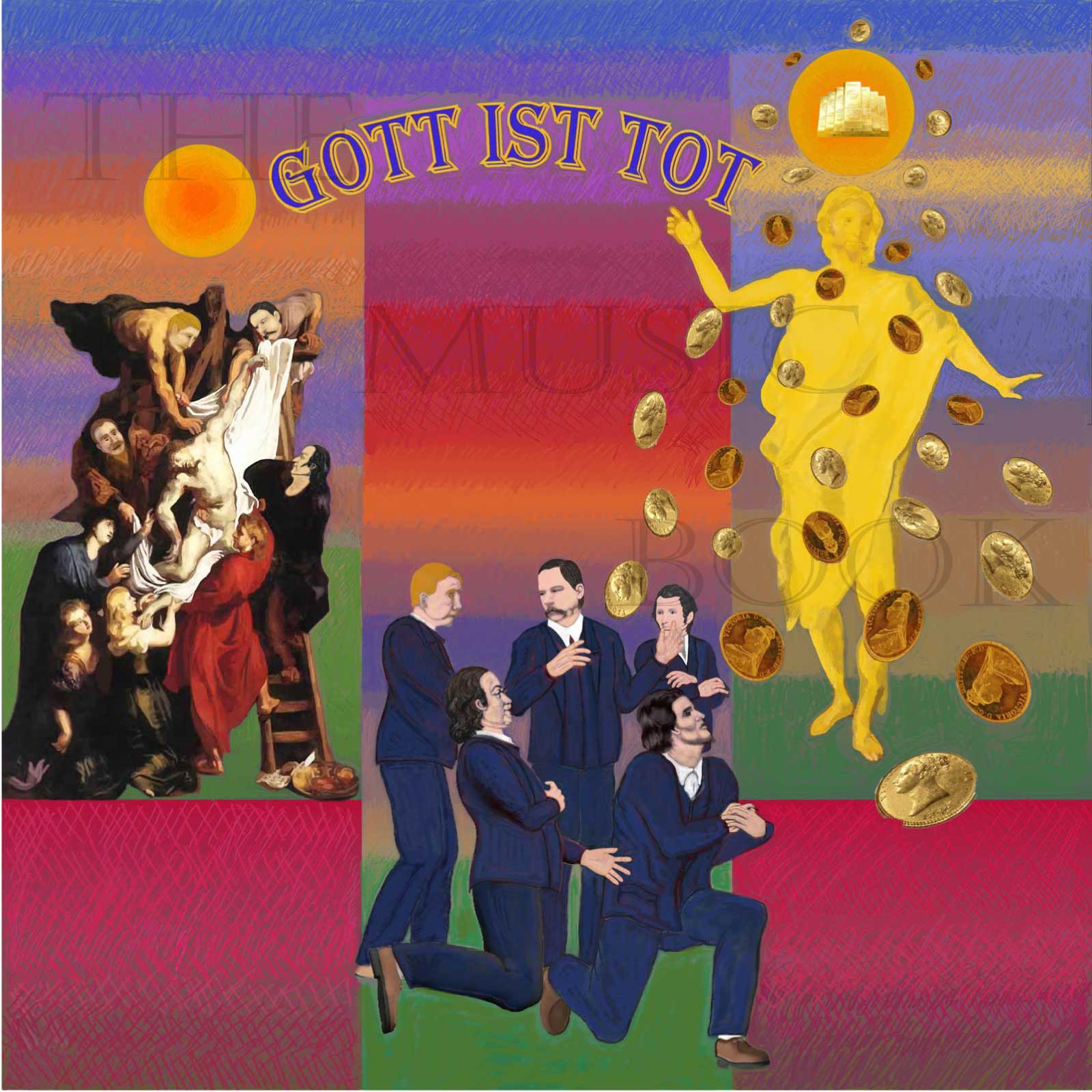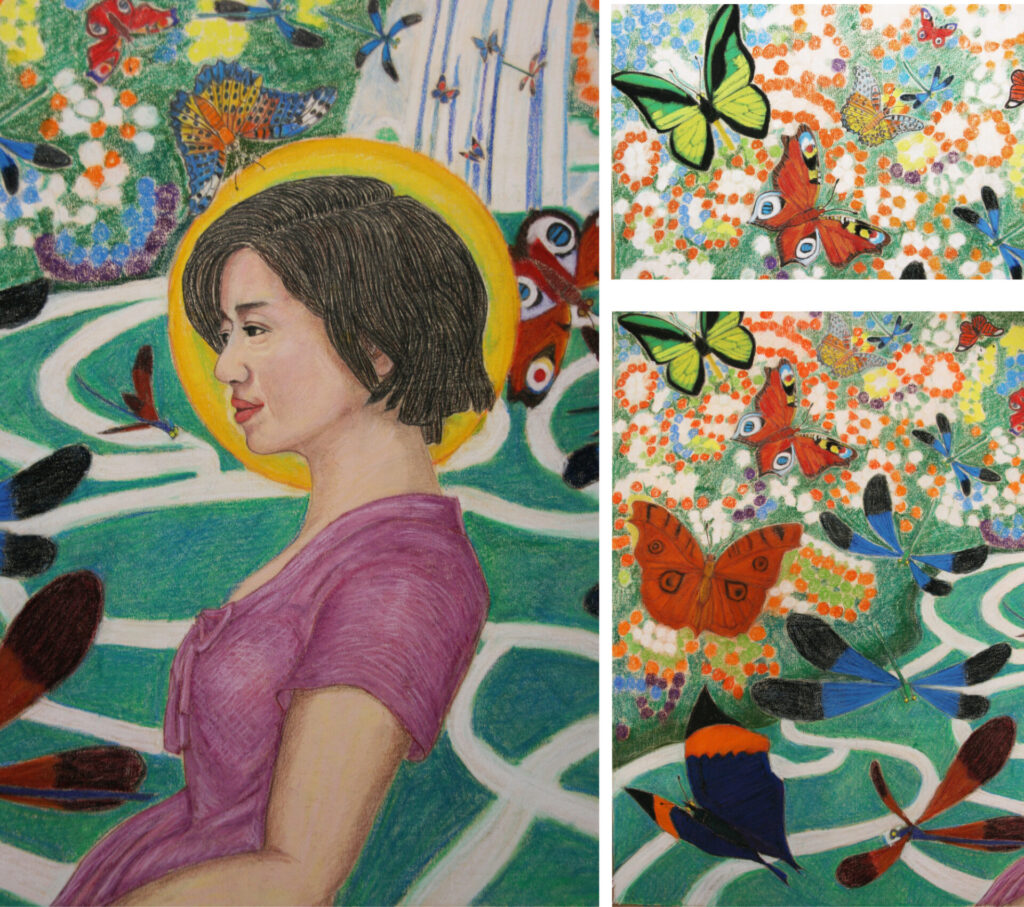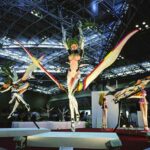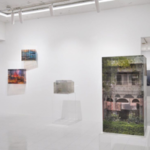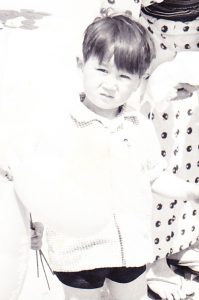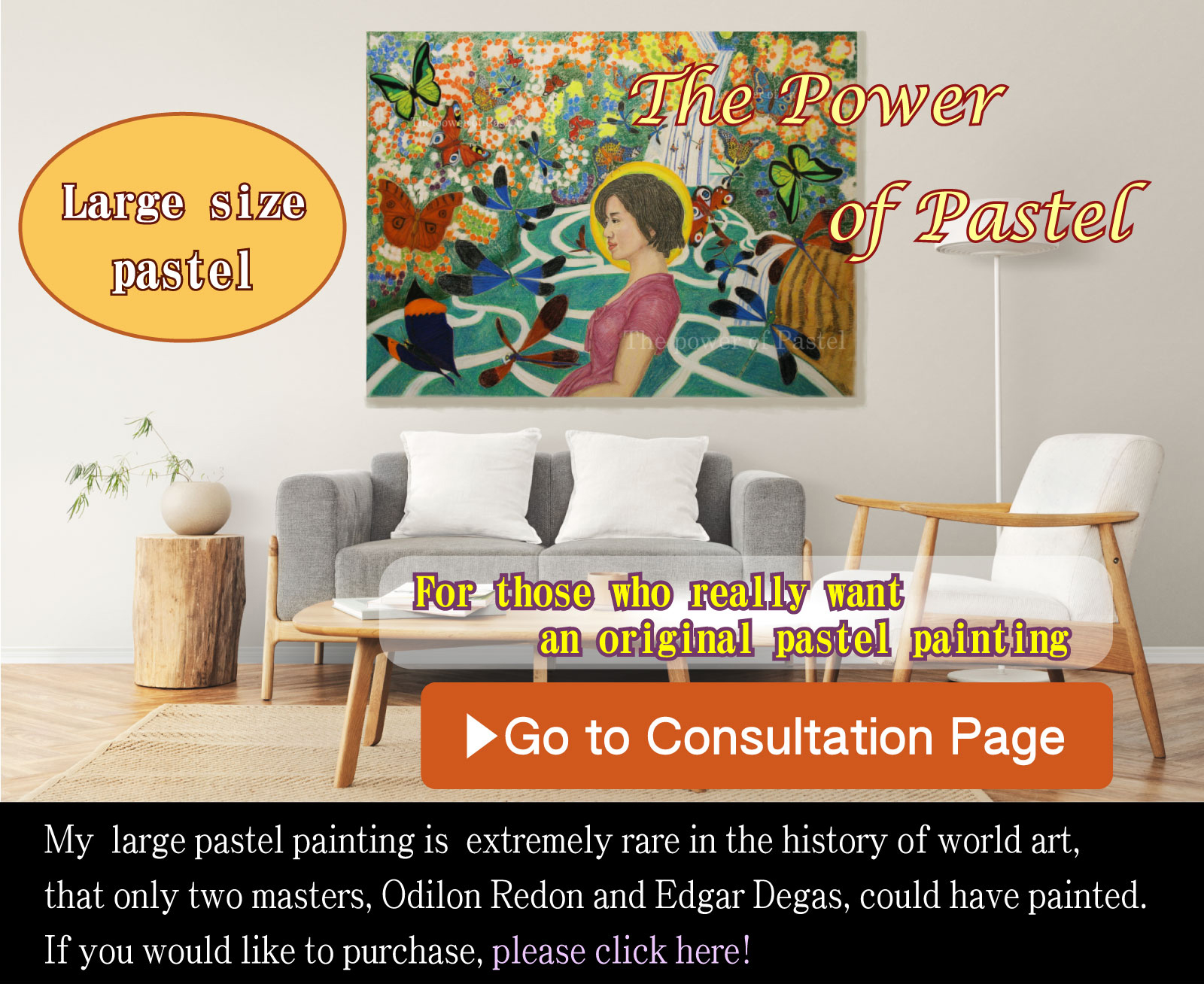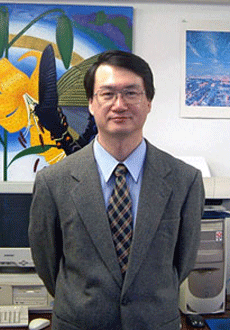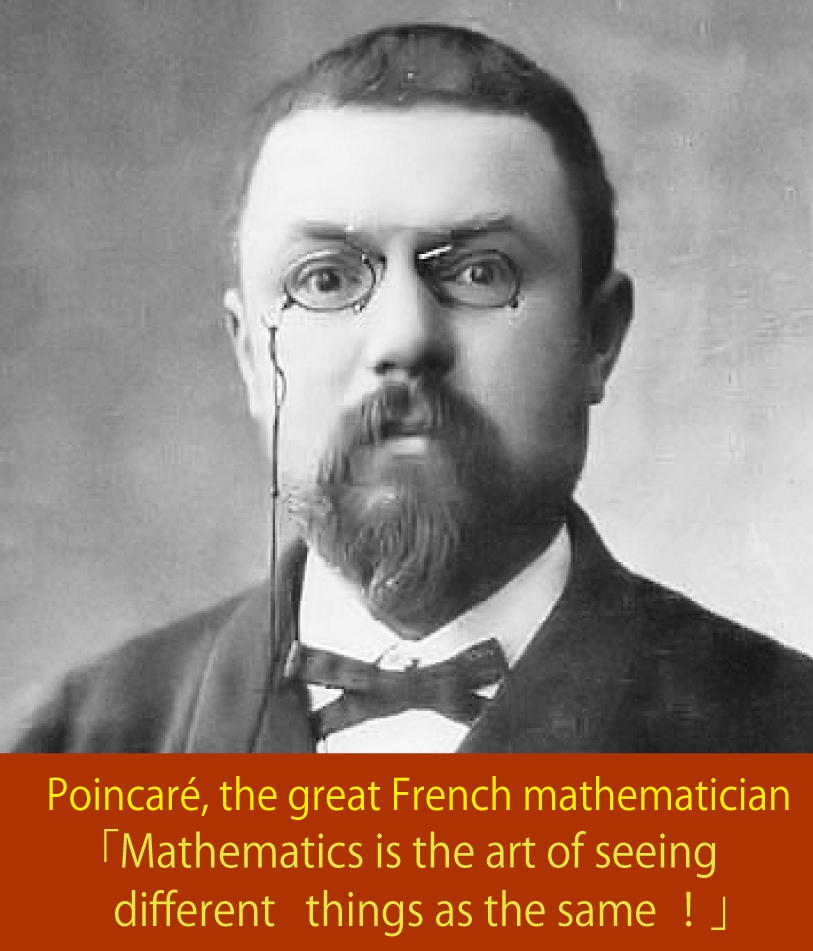
If it's music, listen to the music itself, and if it's a painting, don't look at the painting itself.
I was at a loss for a response.
Nevertheless, I remained convinced afterwards that it was important to integrate painting and music.
Today, I will explain how I should have responded to this opinion.
An idea that is timeless is a new combination of different things.
This is an ironclad rule for good ideas that has been recognized and used by advertising agency employees and others for decades.
James W. Young, who first made this ironclad rule known to the world in a book, explains "How to Inspire Great Ideas" on this website called "How to Create Ideas".
Actually, I had read Young's book 30 years ago, but it was only in the last few years that I clearly and fully understood its meaning.
This is because I have been teaching "How to come up with good ideas," a course for fostering creativity, to almost all students in the elementary, junior high, and high school courses at the Sapporo Web Programming School(札幌WEBプログラミングスクール), which I run.
Young proposed in his book, "The great ideas of our time are new combinations of ideas that find common laws and combine them with ideas that were previously thought to be different."
Young proposed, "The great ideas of our times are new combinations of things previously thought to be different that find a common law and combine it.
What do you think? Doesn't it make a lot of sense?
Let me give you a concrete example.
The genius Steve Jobs sold the world's first smartphone, which was a combination of a personal computer and a cell phone, right?
Until then, the world called Japanese-made cell phones "gara-kei(ガラケー)," meaning that they were too multifunctional, isolated from the rest of the world, and outdated.
In fact, at the time, smart people with foresight went to NTT in Japan to ask them to make a smartphone, but the employees always said, "That's impossible.
"You have to understand how technically difficult it is!"
In fact, Jobs said, "We had to solve a thousand technical difficulties before we could launch the iphone.
There is anpan, isn't there in Japan? This is also a combination of Japanese an(餡子) and Western bread.
The automobile is a combination of a horse-drawn carriage and an engine.
A camera combines a dark box with a lens and a shutter.
A musical combines a play and a musical lecture.
Rock music of the Beatles and the Rolling Stones combines classical music with black music and rhythm & blues.
What do you think? Great ideas come from the very combination of different fields, don't they?
Poincaré combined geometry and algebra to create topology, thinking that "mathematics is the art of seeing different things as the same.
Poincaré defined mathematics as "the art of seeing different things as the same.
It is said that mathematics was born from the idea that different things are the same. For example, three apples and a rope wound around a stake three times.
These two things are completely different. However, long before the beginning of history, human beings found something in common that made them seem "exactly the same.
Yes, the discovery of the abstract concept of "3. This is how mathematics is thought to have begun."
By the way ,What does topology mean?
Simply put, there are formulas for finding the volume and area of three-dimensional objects such as squares and spheres, right?
So what about formulas for finding the volume of a coffee cup, a ship, or a pair of eyeglass frames? Do you have any?
Mathematicians other than Poincaré thought it was impossible.
However, Poincaré discovered that "three dimensions (geometry) of the same form can be expressed by a formula (algebra)" and established the method.
Let me explain more concretely.
What is the same type? In mathematics, this is called a topology.
A doughnut that an object with a single hole, and a coffee cup are seen as having the same topology.
This is because a doughnut can be transformed into a coffee cup with one hole.
Poincaré then discovered an equation for the volume of a doughnut, and by transforming and manipulating this equation, he created an equation for a coffee cup.
So what is so revolutionary about this?
I don't know much about it, but it was probably the first time in the world that a three-dimensional object that could not be represented by a formula before could be expressed by a formula.
This would have made it possible to represent parts and components of airplanes with mathematical formulas and manufacture them precisely, wouldn't it?
In the design of passenger aircraft, it is now possible to efficiently optimize the structure of the aircraft when weight is to be reduced by using better materials = shape design, etc.
Also, it is now possible to transform a main character from a human to an ape or a robot using computer graphics called morphing.
Until then, it was possible to represent some curves of a wing in an equation. It is a differential equation that we learned in high school. I could also calculate volumes. Integral.
However, I guess that Poincaré opened the door to describe the mathematical equation that represents the three-dimensional object itself.
Therefore, topology was an epoch-making discovery, which combined geometry, the study of figures and solids, and algebra, the study of mathematical formulas.
It was I who discovered and combined the common law in "Music and Painting"
It was I who, for the first time in history, did the same thing as Poincaré with "Music and Painting.
Therefore, the answer to Mr. Toyotsu Yamamoto of Tokyo Gallery's first question is
"Discovering and combining the common laws of music and painting, which were once thought to be dissimilar, makes possible a diversity of expression, as well as fresh and innovative expression that has never existed before.
That is what I mean.
As I have told you several times before, I have not been able to forgive paintings for not moving or being still since high school.
I thought that a painting was tantamount to being dead, a still image viewed from the front.
Why don't painters pursue movement on the screen?
Why not try to capture that power that music has to repeat and change parts and patterns over time?
A painter once thought exactly the same thing.
Paul Klee. said,
"When I look at a painting after playing a piece of music by Beethoven or Mozart, I can't help but laugh bitterly.
"So now that I feel the need to discover and develop the musical possibilities of painting, I will become a painter."
Since Kandinsky, who was a colleague of his at the Bauhaus, there is not a single painter other than myself who has shared and inherited this perception.
Therefore, I am dissatisfied with all contemporary painting.
This has nothing to do with the fact that an painter is currently a painter under contract to Gacochan or Hauser & Wirth.
These painters are only considered valuable by the art dealers, and those without movement picture is still boring.
Once again, the time has come for me to take this power of music and develop it into a full-fledged painting.
The Power of Combining Different Fields in Fuji Television's "Iron Chef 料理の鉄人"
This is also used as a teaching material in the Sapporo Programming School's elementary, junior high, and high school courses, "Developing Creativity: How to Come Up with Good Ideas," a Fuji Television in Japan program called "Iron Chef 料理の鉄人" that was broadcast from 1995.
Every week, the TV station would find a challenger, and at the beginning of the program, the station would appoint one Iron Chefs to cook a number of dishes in one hour using the ingredients specified by the station that day (beef, for example), and a panel of judges would score the dishes.
The main iron chefs are Rokusaburo Michiba 道場六三郎 (Japanese cuisine), Kenichi Chin 陳健一 (Chinese cuisine), Masahiko Kobe 神戸昌彦(Italian cuisine), and Hiroyuki Sakai 坂井宏行(French cuisine).
The winning percentage of each Ironman is extremely high: 87% for Rokusaburo Michica, 80% for Hiroyuki Sakai of French cuisine, and 72% for Kenichi Chin of Chinese cuisine.
Although Michiba's and Chef Sakai's win rates are high,
they share a common trait: they are not caught up in their own genre of cuisine.
That is that they are not restricted to their own culinary genre, but combine multiple genres of cuisine with their own specialties.
Mr. Michiba uses and specializes in French ingredients such as foie gras, while Chef Sakai is a French pioneer who went to the renowned ryotei restaurant Kitcho(吉兆), fused French and Japanese cuisine, and incorporated the beauty of kaiseki serving style into his dishes, which are so delicate and beautifully arranged that they are known as "Delacroix of French cuisine" for his delicate, masterful presentation of his dishes.
Chef Sakai is also an excellent pastry chef, and even though he is not a pastry chef, he must have won all of his pastry competitions against numerous talented pastry chefs.
Chef Sakai and Mr. Michiba's "combining different fields" was strongly criticized by the culinary world, including renowned food critic Masuhiro Yamamoto(山本益博), who said it was an evil way.
However, the way the Iron Chef have been able to eliminate challengers every time, clearly shows how "combining different fields" can be advantageous and powerful, don't you think?
Here is an interview with Chef Sakai, in which he talks about how he went to Kitcho(吉兆) even though the culinary world condemned him as a wicked man.
Please take a look.Interview with Hiroyuki Sakai (La Rochelle):

